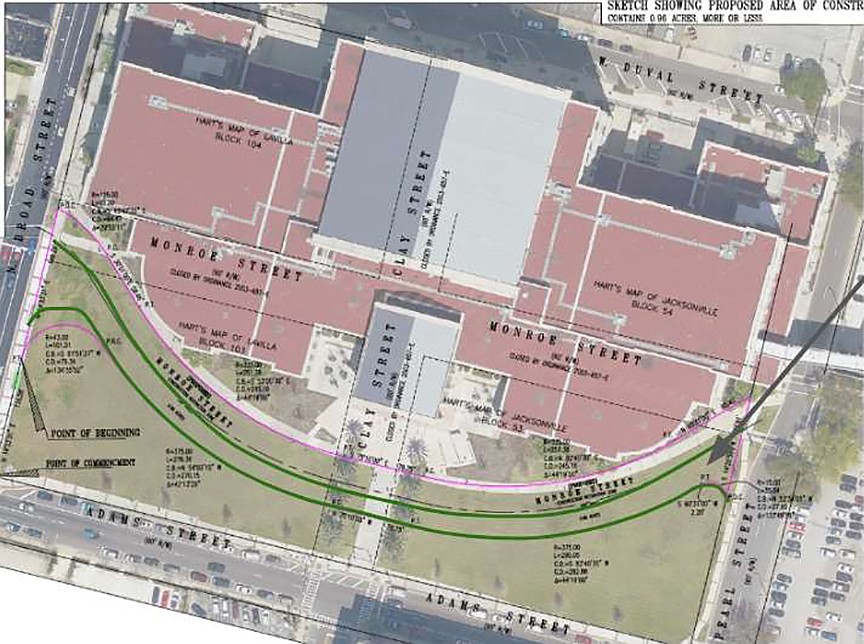
The next Downtown public art installation moved ahead June 2 when the Duval County Courthouse Plaza Stakeholder Committee approved during a Zoom meeting a motion to advance the project to the Art in Public Places Committee of the Cultural Council of Greater Jacksonville.
The site is a 2-acre green space in front of the building along West Adams Street.
The project’s $619,000 budget, 0.75% of the courthouse construction cost, was set aside by a local ordinance for Art in Public Places installations.
It’s the largest budget for an art installation since the program was established by City Council in 1997 – with the longest list of restrictions on what can be installed and where.
When an artist or artists are selected for the project, they will design the plaza with restrictions:
• No trees may be planted.
• No water features.
• No long-term seating.
• The landscape must be easily maintained using only lawnmowers, leaf blowers and pressure washing.
• The site plan must allow for possible future restoration of Monroe Street between Pearl and Julia streets, along Adams Street and the south side of the courthouse.
In 2011, the Downtown Development Review Board supported abandoning the section of Monroe Street adjacent to the courthouse, but City Council denied the abandonment, retaining the city’s ability to rebuild Monroe Street on a curved path in front of the building.
“That’s a lot of disappointing restrictions. We’re limiting our ability to be creative,” said committee member Chris Flagg, a member of the American Society of Landscape Architects Council of Fellows and a Haskell principal.
Glenn Weiss, public art program director at the Cultural Council, said the restriction on trees and seating is for security.
Trees could block the view for surveillance cameras and long-term seating could make it possible for someone to wait to confront someone else entering or leaving the courthouse, a victim of domestic violence, for example, he said.
Caitlin Doherty, director of the Museum of Contemporary Art Jacksonville, said she disagrees with the prohibition on additional trees.
“When the debate puts security against aesthetic, that’s a hard one to win,” said Cory Driscoll, chair of the Cultural Council Art in Public Places Committee.
The prohibition of water features and landscaping, other than the existing grass, is because the city doesn’t want to incur any additional cost of maintenance. If the Cultural Council assumed responsibility, the cost of perpetual maintenance would have to be taken from the project’s budget, Weiss said.
The Monroe Street design requirement is from the Downtown Investment Authority. It eventually plans to convert Adams Street from one-way traffic to two-way traffic and restore a single-lane roadway between Adams and the courthouse entrance to make Monroe Street contiguous between Interstate 95 and the Downtown business district.
“There can’t be anything there that can’t be removed by a bulldozer,” Weiss said.
Weiss said he’s confident the project can add a significant public amenity to the urban core.
“I believe that, with the restrictions, we can find an artist who can make it into a unique space, a space people will go to see,” he said.
The Art in Public Places Committee is scheduled to consider the courthouse plaza project, appoint an artist selection panel and approve a call to artists at its public meeting via Zoom at noon June 10.
Visit culturalcouncil.org for log-in details.